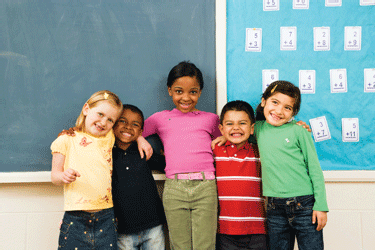Between 2013 to 2014, just 49 percent of Latino children age three to five in Maryland were enrolled in nursery school, pre-school and kindergarten while the percentage was 63 percent for African-Americans and 65 percent for white children, according to a new report from the Annie E. Casey Foundation.
“These are percentages that should be improved because we know that quality education is often a detriment of success as an adult,” said Nonso Umunna, advocacy director for the Baltimore-based Advocates for Children and Youth, a nonprofit that seeks to improve the lives and experiences of Maryland’s children through policy change and program improvement. “There has to be effort made to ensure that these children are enrolled in order to ensure that they’re active and productive contributors which in turn will benefit the state.”
The report, titled “Race for Results,” measured children’s progress in key milestones across racial and ethnic groups and based on an index using composite scores on a scale of one to 1,000 for comparison.
While there has been some progress, children of color continue to struggle, particularly in areas of economic opportunities and education, the report noted.
Across the country, 18 million youth are children of immigrants or immigrants themselves. Of those, 88 percent are U.S. citizens and 84 percent are children of color.
Statewide, 18 percent of African-American fourth graders are proficient in reading, with the figure at 21 percent among Hispanic children.
Among Maryland’s eighth-graders, 14 percent of African-Americans and 24 percent of Hispanics are proficient at math.
In Maryland, 86 percent of young adults between ages 19 and 26 were either working or going to school. This segment includes those young adults who are refugees, immigrants and those under the Deferred Action for Childhood Arrivals (DACA).
Overall, the report revealed persistent challenges in opportunities for success and well being hindering children of color and kids living in immigrant families, especially African-American, Latino and American Indian kids. However, Umunna says there are solutions.
“Increasing economic opportunity for all parents, especially for those [who] need additional support, would ensure that they are able to provide for their children, and helps reduce the stress that is often a consequence of financial instability which in turn can affect a child’s mental health and well-being,” he said.
“Parents should be made aware of the public assistance programs such as tax credits, food assistance, children’s health insurance and other programs. Also, making earned sick and safe leave a state law, would enable parents to take the time they need to care for their health and that of their children and not have to choose between their job or their family,” Umunna said.
The current immigration debate and climate has complicated matters as there are over 8,000 active DACA recipients in Maryland and of those 45 percent are students with 23 percent in high school and a similar percentage in college.
“The current administration’s DACA decision means that most of these immigrant youth are in limbo and can face the possibility of being separated from the families, losing their jobs and not completing their education,” Umunna said. “This is not just a possible loss for them but also for the state and city which would benefit from their education and job skills.”
Baltimore and other cities have been identified as locations where immigrant families are welcomed and protected. Umunna says it’s important for immigrant children and their families to feel that they are in a safe and stress-free environment.
“This means that parents can be able to send their children to school without fearing apprehension by Immigration and Custom Enforcement agents who don’t have special permission or warrant and children can come home knowing their parents will be there when they return,” he said.
Further, steps should be taken to address the early care and education needs of children in immigrant families in Baltimore and Maryland, according Umunna.
“This must include addressing the language and cultural barriers that often hinder immigrant children from progressing and there has to be effort made to hire culturally competent teachers and bilingual teachers to help these children feel welcomed and able to adapt in the educational system,” he said.
To view the full report, visit http://www.aecf.org/resources/2017-race-for-result.
